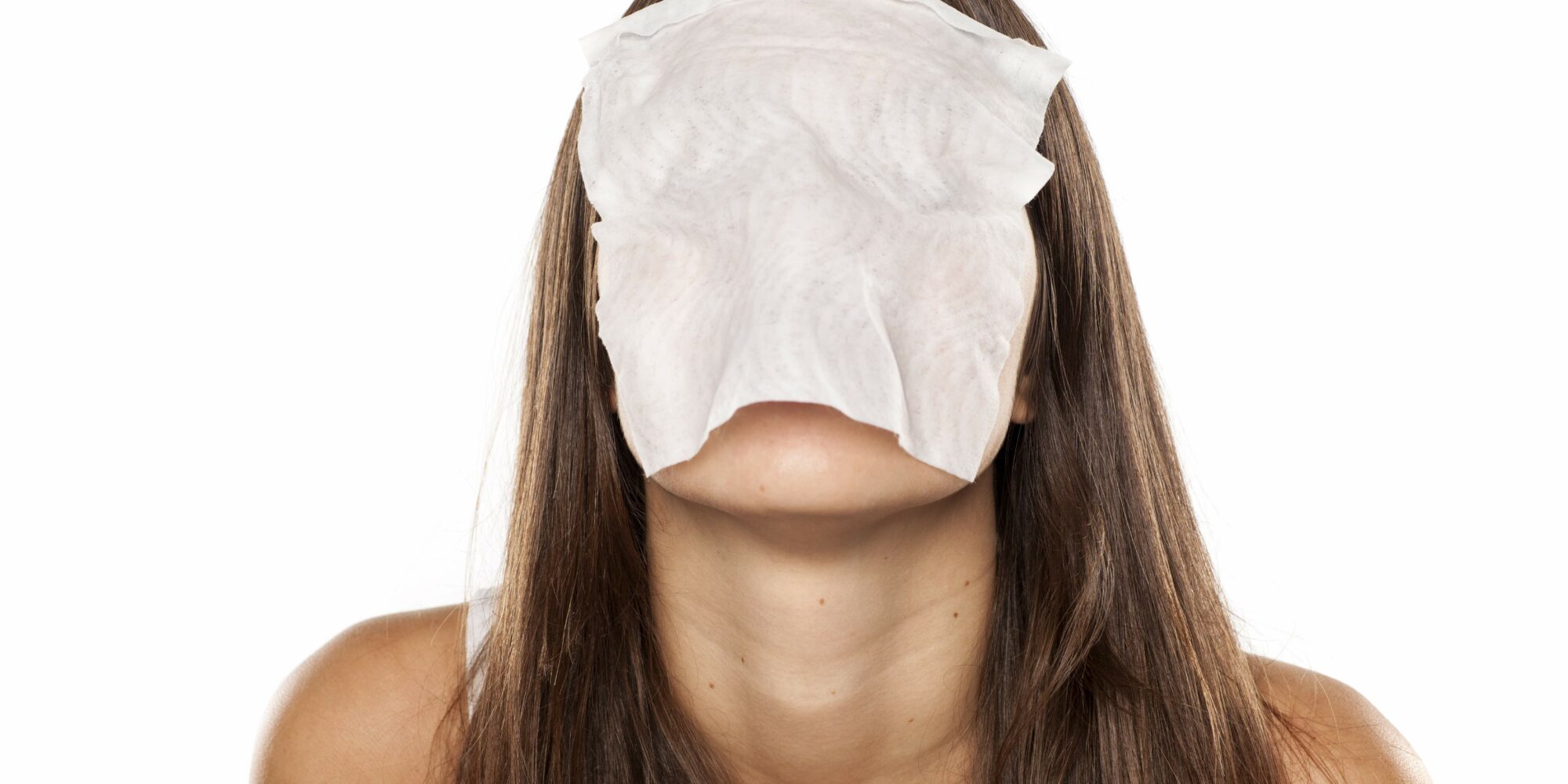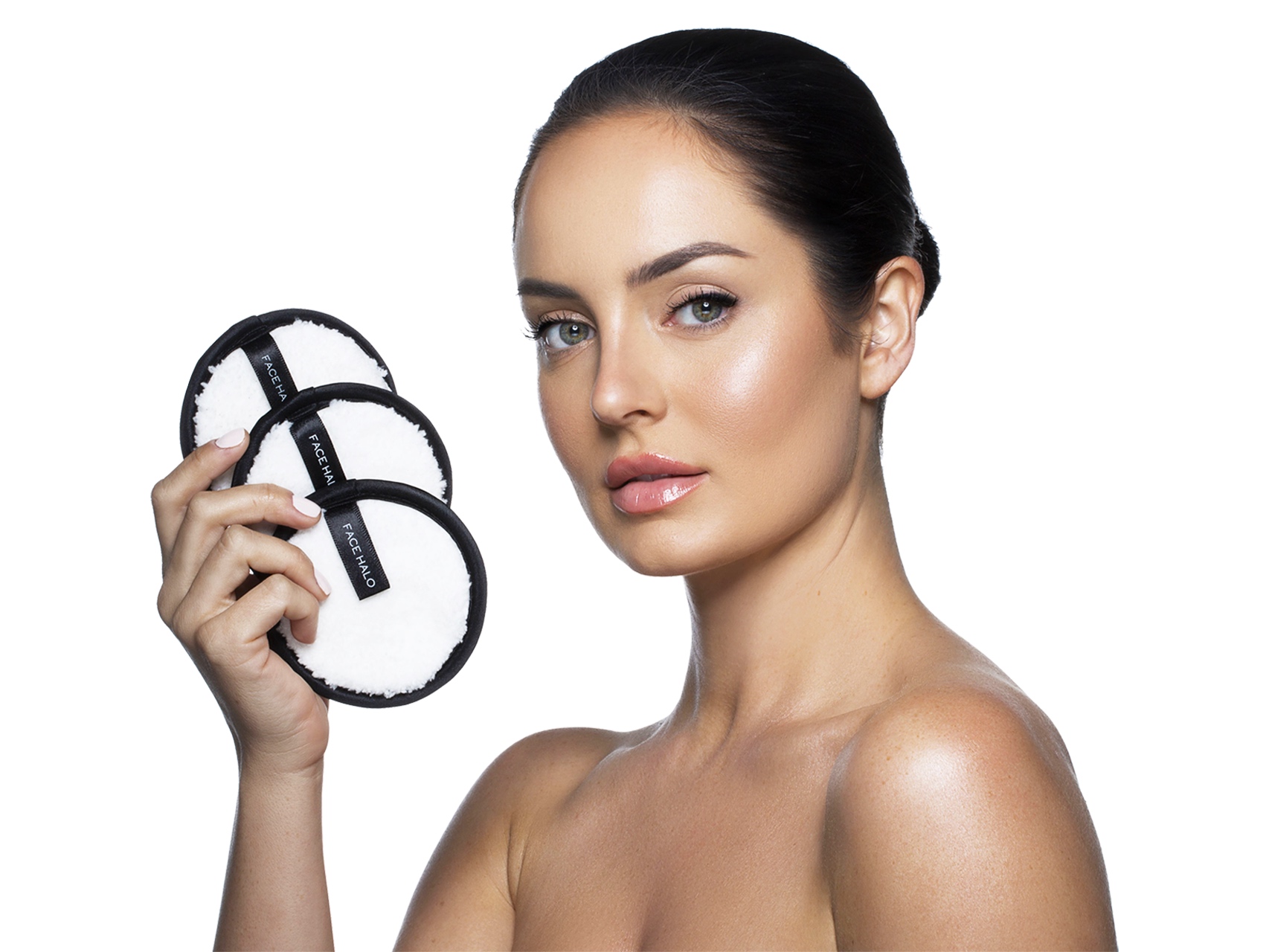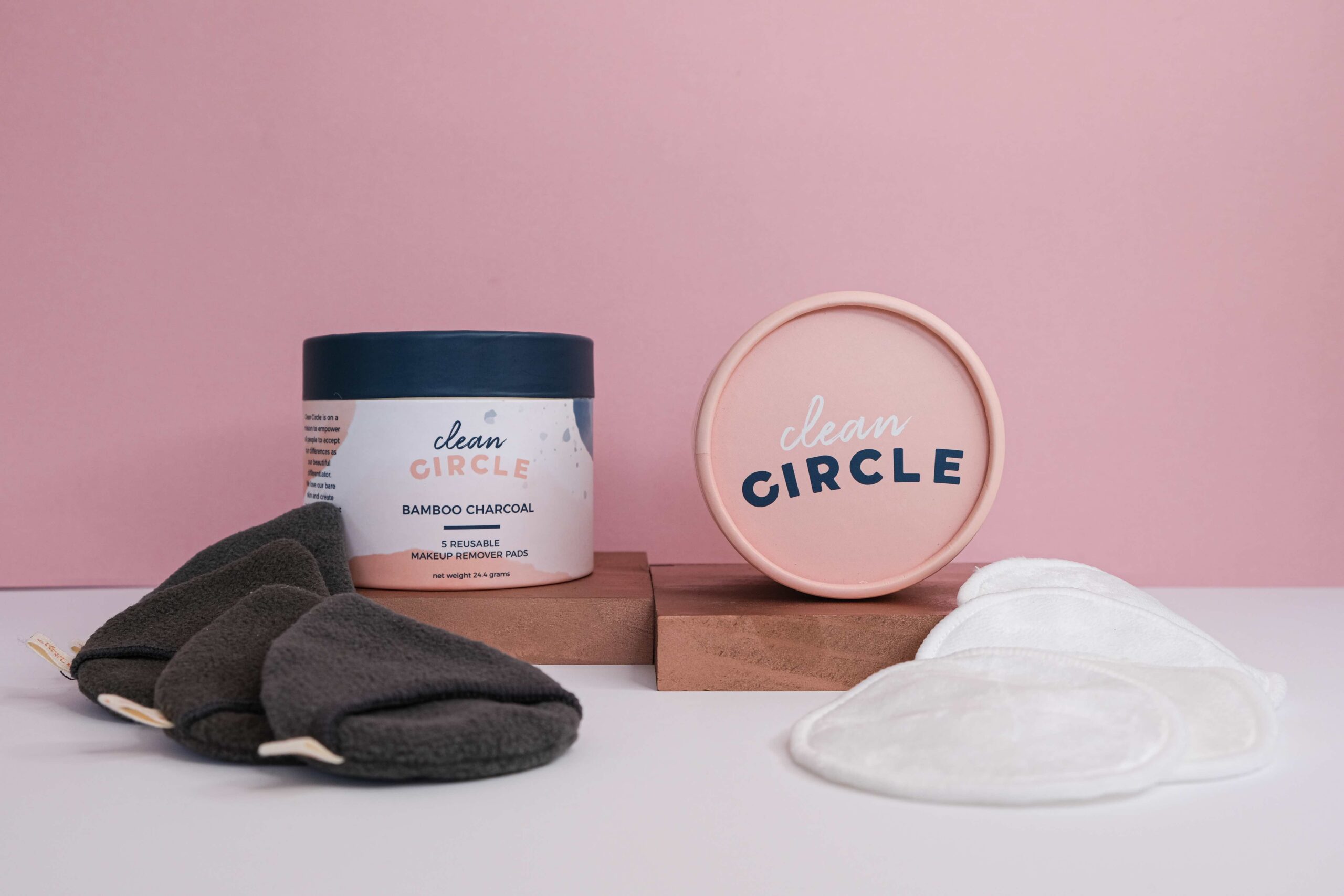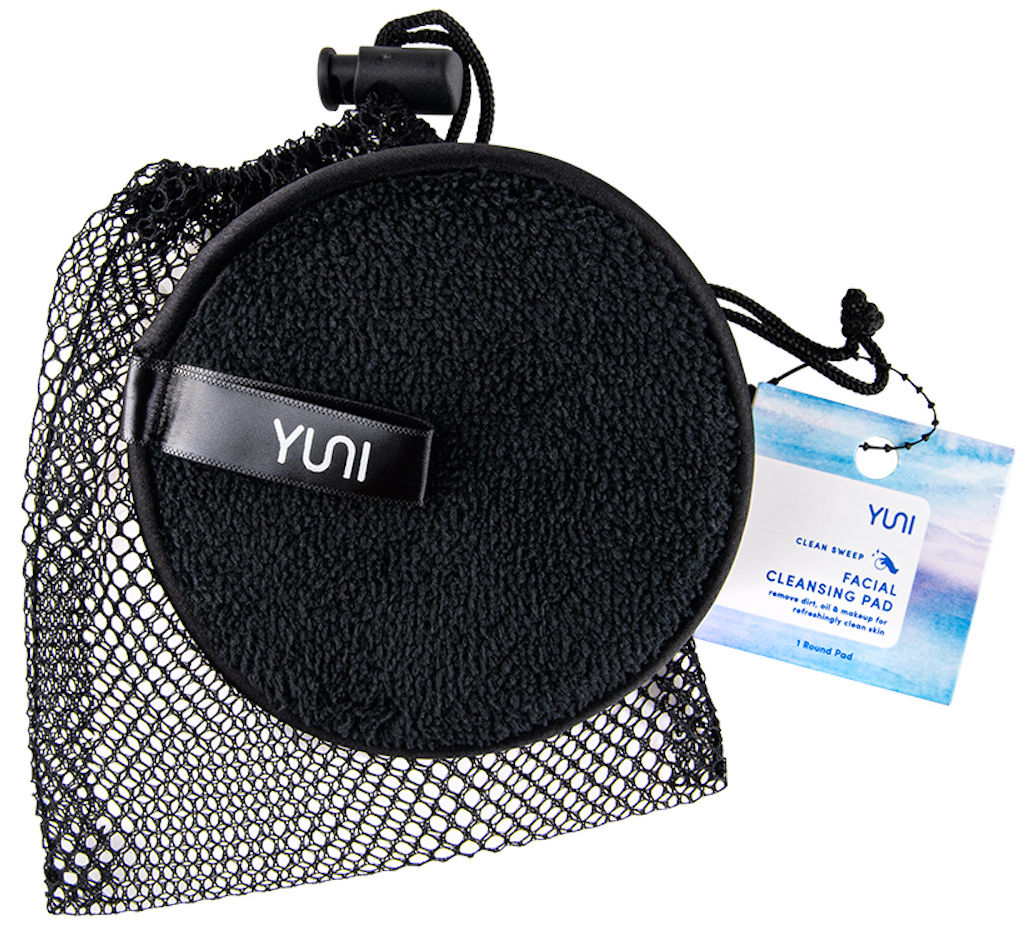
Why The Makeup Wipe Status Quo Will Get Wiped Out
In a lighthearted Harper’s Bazaar video on her nighttime skincare routine posted in August of last year, Rihanna weighed in on a serious topic: the effect makeup wipes are having on the environment. “I used to use a lot of makeup wipes, a lot, and I didn’t really realize what that was doing to the planet,” she said. “And, so, I think it’s kind of a wrap for makeup wipes.”
When the “Umbrella” singer, who singlehandedly changed the conversation about foundation shade ranges, calls a product over, the beauty industry should be listening—and it is. The single-use makeup wipes category is undergoing a transformation as brands selling the throwaway sheets transition to sustainable materials and emerging players pop up to provide longer-lasting substitutes for traditional wipes.
The transformation is driven in part by mounting consumer interest in lessening the environmental damage wrought by products, but also by retailers and governments taking action. Beginning in 2022, wipes sold in the European Union with plastic content will have to divulge that they contain plastic and can’t be flushed down the toilet. The move is intended to prevent plastics from entering into and hurting marine ecosystems.
In September 2019, Holland & Barrett became the first retailer in the United Kingdom to ban wipes from its assortment. Joanna Cooke, director of beauty and sports nutrition at the health and beauty chain, was inspired to push for the ban after reducing her personal environmental footprint by shopping at local stores and buying zero-waste merchandise. In the U.K., recognition of the deleterious consequences of wipe overload swelled after a bus-sized fat berg or mass made up to a great extent of wipes and diapers clogged the London sewer.
“I always thought that we would get a positive reaction from customers—and we did,” says Cooke. “The awareness of all of the environmental issues caused by the amount of waste we all produce has been massively increasing in profile over the last couple of years,” says Cooke. “Lots of people are happy to switch their purchasing to more environmentally friendly alternatives once they know they exist.”
British retailers The Body Shop and Selfridges followed Holland & Barrett’s lead in prohibiting wipes. In the United States, retailer momentum in the anti-wipes area has been slower. However, it’s picking up a bit of speed. As of June this year, Credo is eliminating single-use plastics, a category that encompasses wipes in its definition. Mia Davis, VP of sustainability and impact at Credo, says wipes will be replaced by reusable cloths or pads.

“There has always been a too small subset of consumers that are aware of product and packaging’s impact on the environment, but I think that many more people are starting to digest that our consumer choices really have an impact,” she says. “The amount of resources that beauty products alone take to create and the amount of waste generated along the way and at the ‘end of life’ is really staggering.”
There’s been considerable press attention paid to environmental concerns associated with sheet masks—Vogue compared them to plastic straws in a 2019 article, and Women’s Wear Daily did the same a year later—but sheet mask sales are a fraction of wipe sales. According to Industry Research Co., global sales of sheet masks are expected to advance at a compound annual growth rate of 8.47% to hit $1.2 billion in sales in 2023. Through 2025, the firm projects global sales of facial wipes to proceed at a CAGR of nearly 10% to reach $3.65 billion—and that’s just facial wipes. Allied Market Research forecasts the global personal care wipes market will be worth almost $24 billion in 2023, up from $16.77 billion in 2016.
Data on consumer usage further reveals the pervasiveness of wipes. Consumer information pulled by beauty insights firm Lucky Analytics last year for Beauty Independent shows that 86% of beauty consumers reported they use wipes. A third of beauty consumers said they use makeup wipes every day and another third said they use them one to three times a day. The primary reason for makeup wipe usage they cited is to remove waterproof makeup, and 72% of beauty consumers said they turn to makeup wipes for that reason. Drugstore staples Olay, Neutrogena and Aveeno are favorite brands for makeup wipes among beauty consumers.
The substantial sales and usage of wipes underscore that beauty and personal care brands have a ton at stake in the preservation of the segment dominated to date by plastic-packed wipes. Think Neutrogena’s Makeup Remover Cleansing Towelettes, Clinique’s Take The Day Off Micellar Cleansing Towelettes and Cetaphil’s Gentle Makeup Removing Wipes. A statistic bandied about is that 20 million pounds of single-use wipes are discarded daily in the U.S., and Lizzy Pike, co-founder and executive director of makeup wipe alternative Face Halo, figures 90% of them aren’t biodegradable.
“People probably have no idea that most of them are made out of a plastic because they seem so soft and innocent,” says Susan Bush, principal at circular economy consultancy Circular Matters. She details wipes usually consist of polyester or polypropylene, explaining polypropylene is “the kind of plastic that a yogurt container is made of.” The polyester or polypropylene is often mixed with wool, cotton or other fibers. Because of the mixed material nature of typical wipes, they aren’t recyclable, says Bush, “not to mention to sort them at the recycling facility would be a pain.”
“People probably have no idea that most of them are made out of a plastic because they seem so soft and innocent.”
Consumers can look at and feel plastic bottles to determine they’re constructed from plastic. It’s not as easy with wipes. Only discerning eyes may be able to tell what’s actually in them. Brands disclose the ingredients they infuse into wipes’ fibers, but, as Amanda McIntosh, founder of mitt cleansing specialist Take My Face Off, points out, “There’s no requirement for wipes companies to list fiber content. If they don’t mention it, you can guarantee they’re spun plastic.”
Environmental qualms haven’t stopped some brands from releasing conventional makeup wipes. A month prior to Rihanna’s denunciation of wipes, One/Size, the brand led by influencer Patrick Starrr that’s sold along with Fenty Beauty at Sephora, launched Go Off, a packet of what it describes as the “juiciest makeup remover wipes” on the market that banish a full face of makeup.
While there are eco-conscious exceptions such as Elate Cosmetics, Axiology, Athr Beauty, Pacifica Beauty and Credo-owned Exa Beauty, Rebecca Bartlett, founder and creative director of Bartlett Brands, an agency that’s worked with Exa Beauty, Biossance, Eleven and Paula’s Choice, says the march of customary makeup wipes persists because color cosmetics brands, particularly those with an Instagram-style glamour bent, have lagged skincare and personal care brands in the sustainability realm. To them, the notion of sustainable wipes may not mesh with the performance necessary to remove dramatic makeup, although Raj Prakash, CEO of wipes manufacturer Anthem, maintains there isn’t a performance discrepancy between biodegradable and traditional makeup wipes.
Bartlett decries mainstream color cosmetics as “the fast fashion of the beauty industry.” Discussing One/Size, she says its customer, “a gen Z/millennial super beauty maximalist, is definitely aware of environmental issues—you’d have to be living under a rock to not hear about trash in the ocean—but may not be aware of how little most color cosmetics brands have done to address the issue.”
Within the beauty industry, brands are definitely cognizant of wipe materials. Last year, Prakash discloses Anthem registered triple-digit growth in its makeup wipe business, and new orders were entirely for biodegradable versions. The biodegradable wipes don’t have polyester or polypropylene and, instead, are completely constructed out of viscose or cellulose from trees or plants. The biodegradable wipes manufactured by Anthem biodegrade in 90 days. Today, for brands, they are priced 30% to 40% above wipes with plastic in them and, at retail, Prakash approximates biodegradable wipes carry a 15% to 20% price premium. He anticipates the prices will shrink in the near future, though, and is considering making a lower-cost option that biodegrades in 30 days available.

“I don’t see the wipes business by any means reducing. I just see it continuing to grow and, especially after COVID and everything that happened last year, now people will make it the norm to carry disinfecting products in their pockets and when they travel,” says Prakash. “That behavior is going to stick for years to come, so I’m bullish on the wipes business globally. As sustainable materials become more and more accessible and affordable, that will drive even more use.”
Biodegradable wipes, of course, must be placed in a position to biodegrade. “After you throw them away, the wipes have to be in ideal conditions in order to degrade quickly,” says Karen Reznik, co-founder and product developer at beauty brand consultancy Athena Beauty Group. “I don’t think most people are aware of that. We can improve the situation through education.” Mary Futher, founder of Kaia Naturals, a clean personal care brand selling bamboo The Vitamin Cleanse wipes that are biodegradable and compostable, agrees that education is crucial. She says, “I do think that consumers need to go the extra mile of ensuring that they do not end up in the water stream or a landfill. So, it really comes down to making that extra effort to compost or ensure they land in a city composter.”
Additionally, as biodegradable wipes break down, there could be ingredients in them not favorable to the environmental that seep into it. “Most people are focused on the sustainability of the wipe itself, losing the importance of the other ingredients getting flushed down the toilet,” says Conscious Coconut founder Danielle Conte, noting her brand’s biodegradable bamboo wipes feature coconut oil that’s “completely consumable and certified organic, which doesn’t harm the environment whatsoever.” Sara Marino, a green living expert and blogger behind Tree Hugger In Heels, says, “My go-to brand is Beautycounter for makeup wipes because they are biodegradable and only made with safer ingredients. Since wipes have to stay moist and packaged so long, they often have a lot of crazy preservatives in them.”
For moistness purposes, eco-friendly packaging can be a conundrum for wipes purveyors. Because wipe packaging is commonly flexible and has to be hermetically sealed, Prakash comments there are fewer sustainable packaging choices on the market for wipes than is generally the case for beauty products. Thankfully for wipes brand seeking to be sustainable, the packaging landscape is evolving as greener packaging offerings multiply. “It’s a matter of trialing, testing and seeing if they work over the long term,” says Prakash. “That’s very important.”
Beauty enthusiasts may be steering clear of wipes for motivations that have nothing to do with the environment. There’s an expanding group of skincare professionals and influencers arguing wipes are bad for skin. Aesthetician and holistic beauty expert Allison Marks says, “I do not recommend makeup removal or cleansing wipes. They can be made of materials that can be abrasive and irritate the skin. I also find clients think, if they use a wipe, they do not need to cleanse their skin after using the wipe. I recommend double cleansing to thoroughly cleanse the face.”
“There is an opportunity to continue innovating in this space as over three-quarters of beauty consumers do want more eco-friendly solutions.”
For consumers avoiding makeup wipes for skin or environmental concerns, there are reusable alternatives from brands such as Take My Face Off, Croon, Face Halo, Clean Circle, The Original MakeUp Eraser, Yuni and LastObject. Sales of the reusable products remain tiny relative to sales of disposable makeup wipes, but they’re gaining. Clean Circle debuted in December, and sales of its bamboo makeup remover rounds have been doubling monthly. The brand will soon arrive in Asos’s selection.
“With Credo making that stance on [single-use plastics] and more and more brands coming out with their own innovative ways to replace single-use sheet masks and wipes, it’s definitely going to shift in the next few years with people being more thoughtful about waste,” says Lena Chao, founder of Clean Circle. “I think more retailers are going to start moving that way, too, it’s just about who is agile enough to do it fast.”
Face Halo recently rolled out to Ulta Beauty stores nationwide with its reusable makeup removers. In total, it’s available at over 5,000 retail doors worldwide. Preceding Ulta Beauty, Liberty London, Harrods, Selfridges and Net-a-Porter decided to stock the brand. Around the globe, Face Halo sells 1.4 reusable makeup removers per minute.
Pike suggests the biggest hurdle to getting consumers on board with reusable makeup removers is they simply don’t know about them. She says, “To be honest, our research shows that the U.S. does not have as much awareness about makeup wipes and the harm they do to the environment yet. The U.K. and Australia are all about sustainable beauty, and the beauty editors in these countries just want to talk about this.”
Once consumers know about makeup wipe alternatives, cost can be an impediment to the adoption of them. A pack of three Face Halo reusable makeup removers is $22. Neutrogena’s wipes are priced at $4.99 online at Target for 25-count pack. To help convince consumers to swap their wipes for reusable makeup removers, Face Halo shares that its remover is the equivalent of 500 makeup wipes. The removers last up to 200 machine washes. Face Halo calculates it’s kept a billion makeup wipes from going to landfills.

“If you are using a single-use product, that can add up to be very expensive as well and, once you become aware of the fact of how much time they take to break down and that they go into landfills, because of the guilt that you have from putting a makeup wipe in the toilet, you have the thought in your head, ‘There must be a better way,’” says Pike. A plastic wipe is estimated to take 100 years to decompose.
Reusable makeup removers aren’t perfect from an environmental perspective. Textiles, including reusable makeup removers and makeup wipes, require water-intensive manufacturing, and reusable makeup removers require extra water from washing at home. “The main reason why people do not use and reuse the same facial cloth is because of bacteria and fungus that thrive on wet surfaces,” says Futher. “And does daily cloth washing really reduce the environmental footprint?”
On top of the water questions, the materials in reusable makeup removers can be problematic. Emmanuel Rey, founder and CEO of Yuni, which has a synthetic microfiber cleansing facial pad and biodegradable body wipes in its product collection, says, “Most of the cotton pads that you buy on the market are not organic, and cotton is one of the plants that uses the most pesticides in the world. For the environment, it’s not that great either.” And the discarding of reusable wipes has to be taken into account. Face Halo customers can send back their reusable makeup removers to the brand to be upcycled.
As consumers’ understanding of the environment and makeup wipes escalates, nobody believes they will want to backtrack to making the least environmentally responsible makeup remover purchase. Even Lucky Analytics’ data exposing the steadfastness of makeup wipe dependence shows signs that sustainability could be a factor in makeup wipe purchases going forward.
Lucky Analytics asked beauty consumers, “How important to you is sustainability/environmental safety when choosing a wipe?” In response, 44% said “very important” and 34% said “somewhat important.” Doreen Bloch, founder and CEO of the firm, says, “So, there is an opportunity to continue innovating in this space as over three-quarters of beauty consumers do want more eco-friendly solutions.”
KEY TAKEAWAYS
- The movement toward more eco-friendly makeup wipes is driven in part by mounting consumer interest in lessening the environmental damage wrought by products, but also by retailers and governments taking action. In the United Kingdom, Selfridges, Holland & Barrett and The Body Shop have banned wipes. In the United States, they will be gone from Credo by June.
- Beginning in 2022, wipes sold in the European Union with plastic content will have to reveal that they contain plastic and can’t be flushed down the toilet. The move is intended to prevent plastics from hurting marine ecosystems.
- The wipes market is growing. Industry Research Co. projects global sales of facial wipes to proceed at a compound annual growth rate of nearly 10% to reach $3.65 billion in 2025.
- To date, the wipes market has been dominated by products with polyester or polypropylene. Biodegradable options exclude those materials and contain viscose or cellulose.
- Brands disclose the ingredients they infuse into wipes’ fibers, but, as Amanda McIntosh, founder of mitt cleansing specialist Take My Face Off, points out, “There’s no requirement for wipes companies to list fiber content. If they don’t mention it, you can guarantee they’re spun plastic.”
- Biodegradable wipes, of course, must be placed in a position to biodegrade. “After you throw them away, the wipes have to be in ideal conditions in order to degrade quickly,” says Karen Reznik, co-founder and product developer at beauty brand consultancy Athena Beauty Group.
- There are reusable alternatives to makeup wipes from brands such as Take My Face Off, Croon, Face Halo, Clean Circle, The Original MakeUp Eraser, Yuni and LastObject. Sales of the products remain tiny relative to disposable makeup wipes, but they’re gaining.
- Reusable makeup removers aren't environmentally perfect. They can require a lot of water in production and from repeated washing, and the materials they are made out of can be cultivated in environmentally damaging ways.
- As consumers become more aware of environmental issues, nobody in the beauty industry believes that they will be retreating from biodegradable wipes or reusable alternatives to less eco-friendly options. The open question is which brands and retails can position themselves to take most advantage of the sustainable evolution of makeup removers.





Leave a Reply
You must be logged in to post a comment.